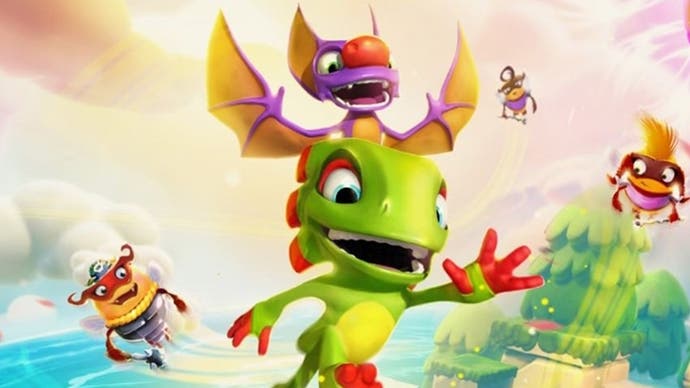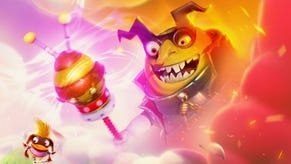Yooka-Laylee and the Impossible Lair: spotless on Switch, superb elsewhere
Making Nintendo's console hybrid the lead platform pays dividends.
Where the original Yooka-Laylee exploited Playtonic's Rare pedigree with a modern take on Banjo-Kazooie, the sequel is a very different animal. Think of Yooka-Laylee and the Impossible Lair as as a modern day take on Donkey Kong Country. This new game is a bit of treat, standing strong next to both the original DKC games and Retro Studios' Tropical Freeze - but what makes this project especially interesting from the DF perspective is its performance target across all console platforms. Unlike the original Yooka-Laylee, Playtonic opts to target 60 frames per second - a tall order, especially on Switch. The team has succeeded admirably and the process employed in delivering a fluid, fun experience across all systems is fascinating, and very much a departure from the norm.
With bright colours and richly detailed stages, Yooka-Laylee and the Impossible Lair is a great-looking side scroller. It's built using 3D graphics but plays out entirely in 2D - much like Retro Studios' Donkey Kong Country: Tropical Freeze. Like the original Yooka-Laylee, Impossible Lair is built in Unity and it quickly demonstrates both improvements to the engine and an evolution for the Playtonic team itself. This new game is both more visually striking than the original and much more fluid across every platform. Obviously, part of this stems from the design itself - the game is played from a side-view as opposed to a free-roaming environment and this allows for clever visual tricks such as 2D elements used in the distant background alongside 3D structures. It's an example of gameplay first with clean, legible level design, smooth performance and great contrast between the background and foreground.
This time around, the game is available across all major platforms on day one including Switch, PlayStation 4, Xbox One and the PC. Unlike the original Yooka-Laylee, however, every single version of The Impossible Lair was developed in-house at Playtonic, whereas Team 17 handled the PS4 and Xbox One conversions of the previous game. The nature of the development process here is fascinating in that the studio built the game from the ground up to run at 60 frames per second on Switch, the idea being to set the standard on the least capable system and then scale upwards.
As a major focal development point, the Switch game is fascinating. Played in docked mode, the game delivers a fixed resolution of 1360x765, while portable mode runs at 960x540 - which is where I feel it looks best due to the smaller screen. Xbox One X uses a dynamic resolution system, targeting native 4K. It reaches this resolution most of the time with dips occurring only when rendering frame-time exceeds 16ms. The lowest I counted was 1584p which occurs when certain stages, such as stage four, are loaded. After a few seconds, however, resolution increases to around 2016p before reaching full 4K after moving forward.
Curiously, dynamic resolution is only used on Xbox One X - all other versions use a fixed resolution. On Xbox One S, PlayStation 4 and PS4 Pro, the game runs at a locked 1080p. What sticks out here is the resolution on Sony's supercharged console, where you would expect something higher than the base consoles. Speaking to Playtonic, there are plans to look at it again but for reasons unknown, the game as is ships looking essentially identical to the base console.
It's an interesting but somewhat expected split outside of the Pro version, but even when playing at the lowest resolutions, the game looks great across all platforms. There are two main differences between the Switch and other versions, however. Firstly, texture resolution is reduced, as is texture filtering itself. As a result, surfaces appear somewhat less sharp than on the other consoles, especially at oblique angles. This is mostly an issue when playing in docked mode, as the loss in detail is difficult to spot on the smaller screen when using a Switch Lite or an original Switch. The other difference lies in shadow resolution which is reduced slightly resulting in chunkier edges. So if you're looking for differences, this is what you can expect to find.

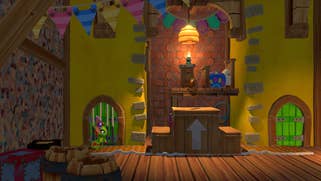
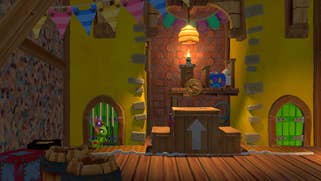

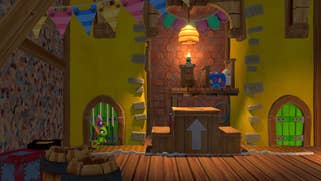
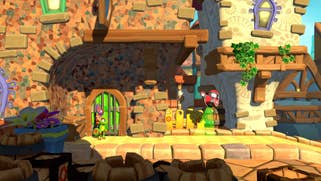

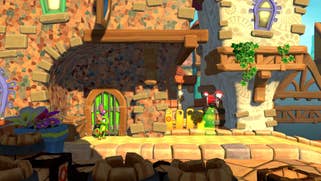



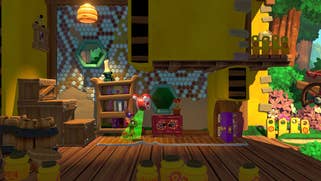
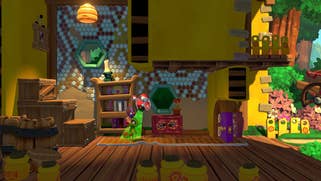
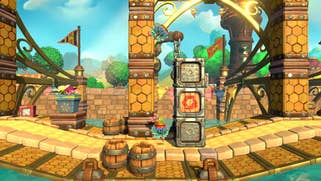
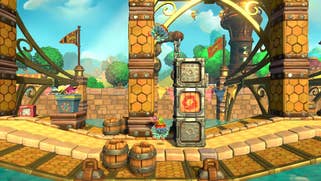
Looking across all versions, the results are almost universally excellent with base consoles offering full 1080p60 playback, Switch stacking up about as you'd expect and Xbox One X running with a higher resolution. It's really only the PS4 Pro version that falls short, which is certainly a disappointment as the hardware is more than capable of pushing beyond 1080p. No matter which platform you play on, the visuals are beautiful: each stage is packed with dynamic, shadow casting lights and beautifully crafted scenery. Textures are sharp and clean, underwater areas are suitably murky and we even have a great looking overworld to explore which completely switches things up.
Obviously, as a 2D platform game, performance is key and this is where the game really shines. Basically, the team aims to deliver 60 frames per second no matter which platform you're playing on - a nice leap from the 30fps Yooka-Laylee targeted. I'd imagine the Switch version was most challenging in this regard but as I understand, this was indeed the target platform. The idea is that if you can hit 60fps on Switch, it should be possible to achieve the same on other platforms and the developer can scale up from there. Thankfully, the team was successful in reaching its target - The Impossible Lair delivers a smooth, stable 60 frames per second free of hiccups, skips, hitches and the like. That said, it's not 100 per cent perfect - maybe just 99 per cent. I did manage to produce slowdown in a couple of spots, but the results are certainly solid overall. Portable mode fares even better, as the stage which exhibits slow-down while docked runs perfectly here and I was not able to trigger any slowdown at all during play.
When you look at all five platforms and take into account docked and portable play on Switch, that is six different console performance targets and the results are almost flawless. This is one of the smoothest multi-platform games in recent memory with only minor hiccups on Switch in docked mode detracting from its perfect record. The development team deserves a lot of credit for nailing this aspect of the game. In fact, criticisms with the game are slight enough that it's just the extended loading times at the beginning of the game that are my main gripe.
From a technical standpoint, Yooka-Laylee and the Impossible Lair is a great showpiece for both the Playtonic team itself and the Unity Engine. It looks and runs like a dream - and as a fan of platform games, I highly recommend it. It recalls the original Donkey Kong Country trilogy while offering its own unique take on the genre. It's disappointing that the PS4 Pro version isn't higher resolution but every other iteration is solid. The Switch game is the least visually impressive overall compared to the likes of the Xbox One X, but hitting that all-important 60 frames per second makes a huge difference in delivering a great portable adventure.
